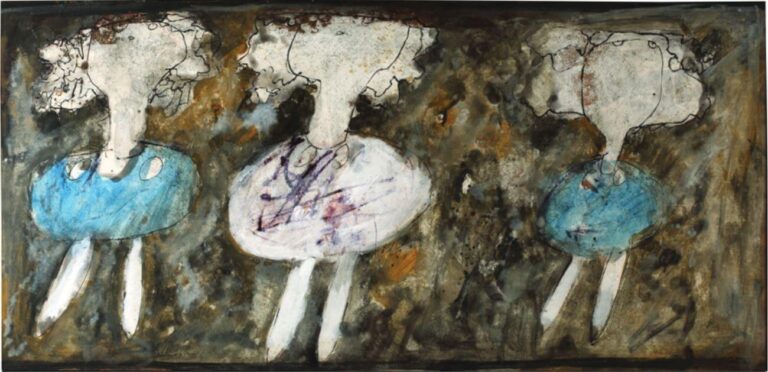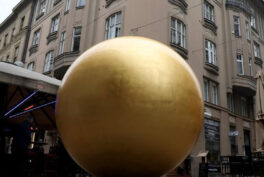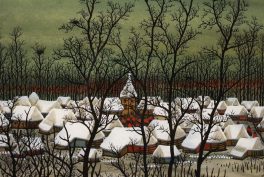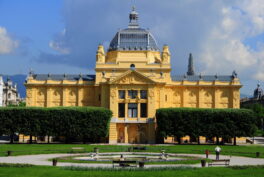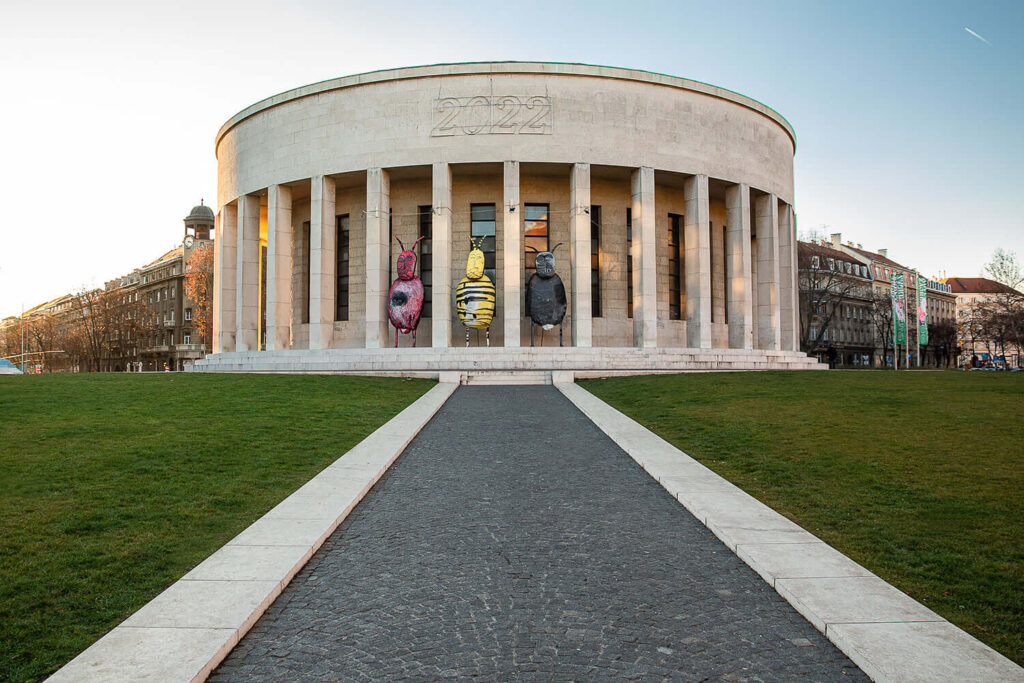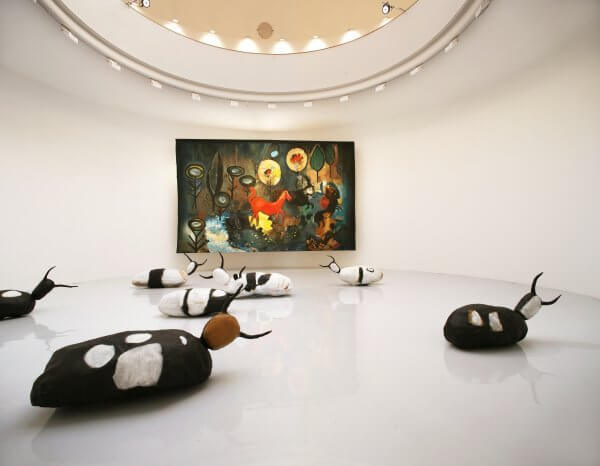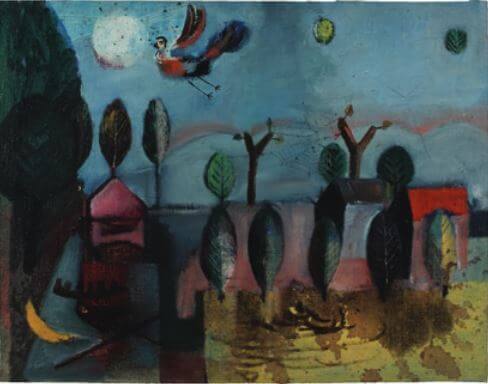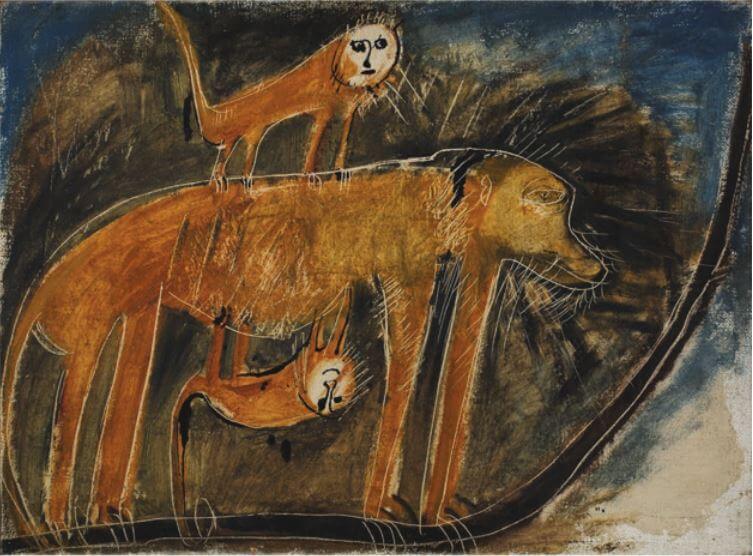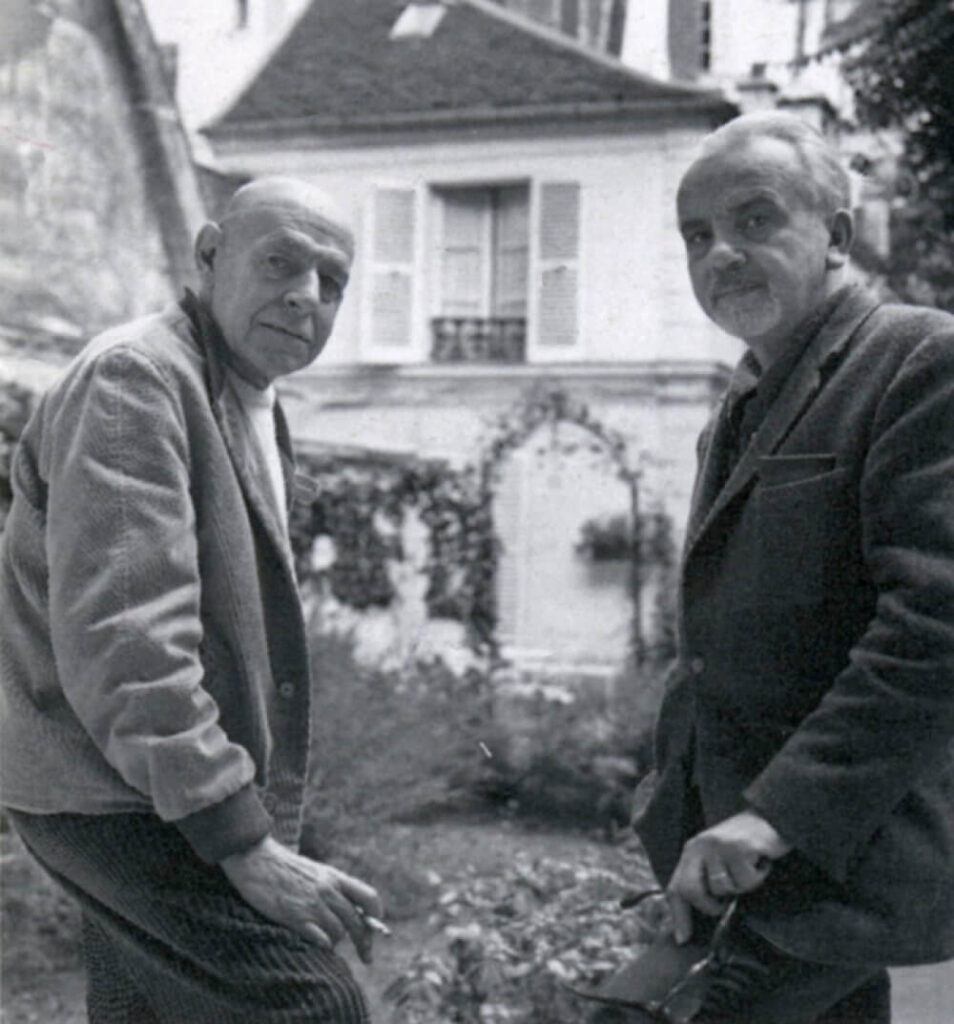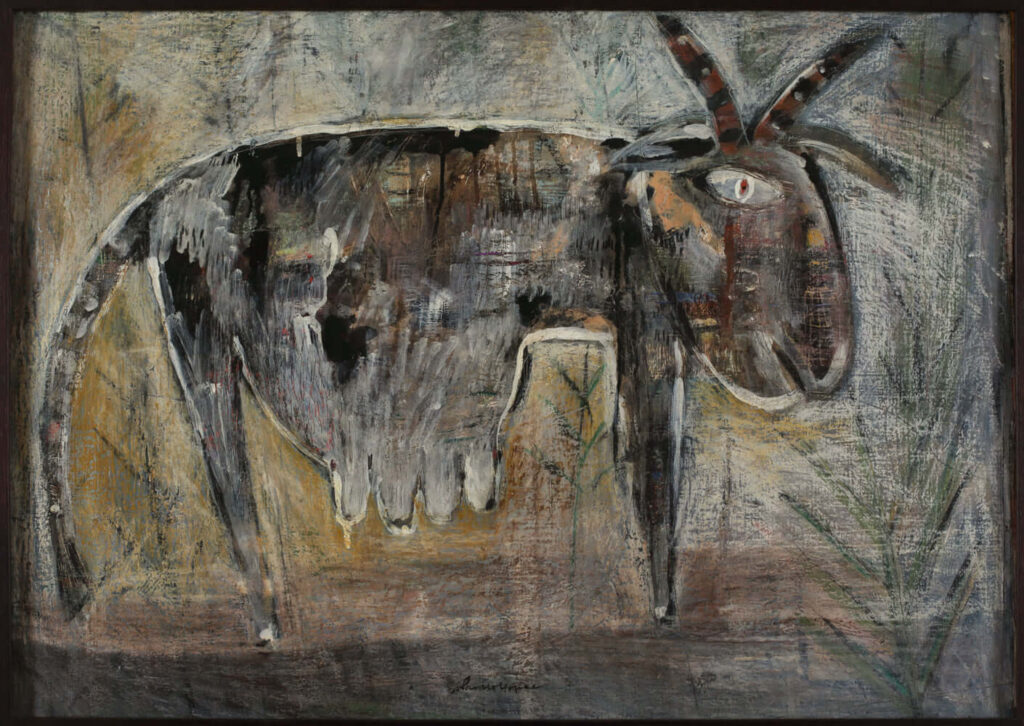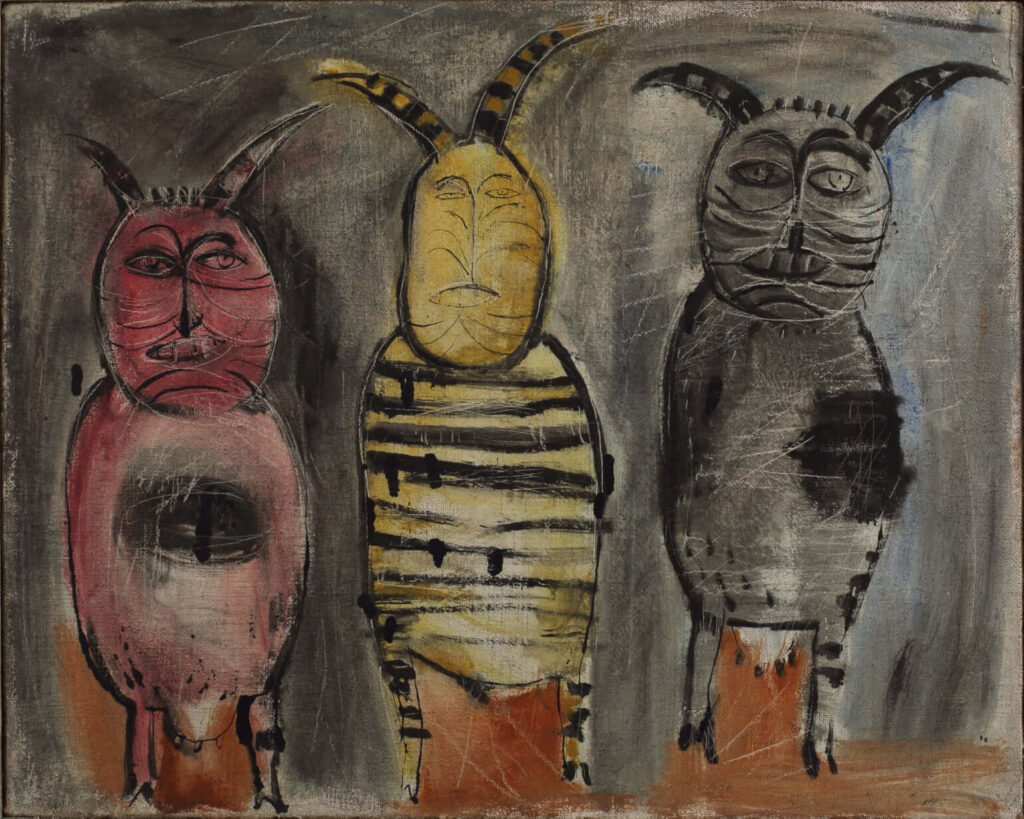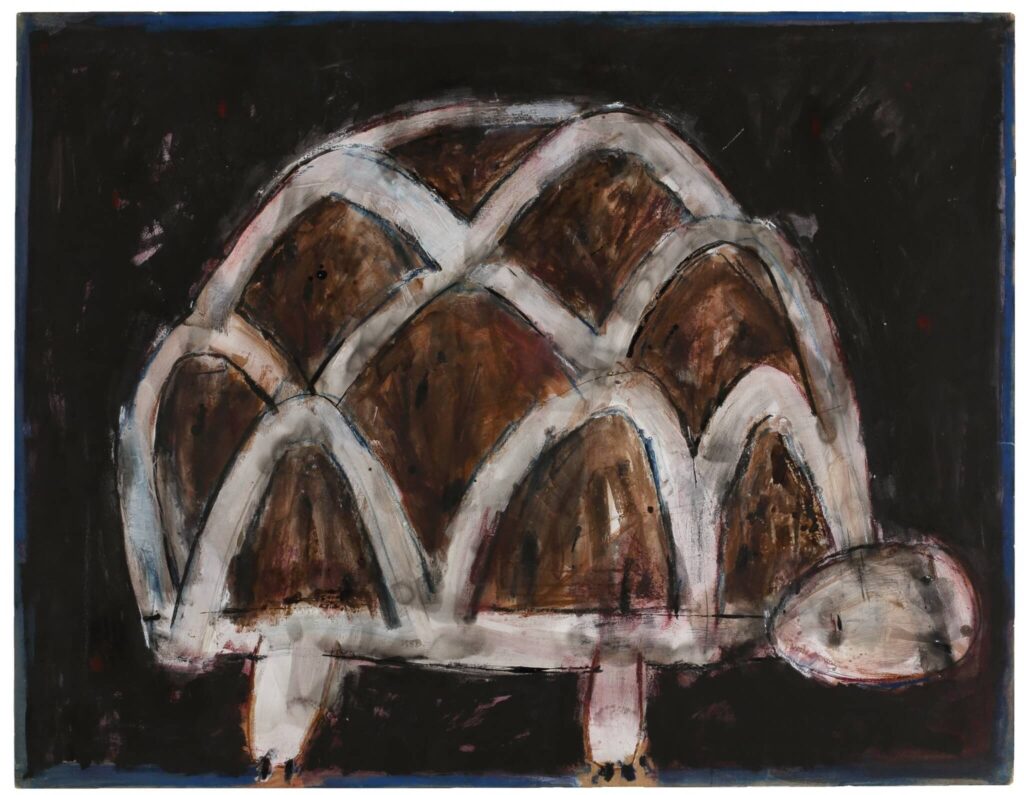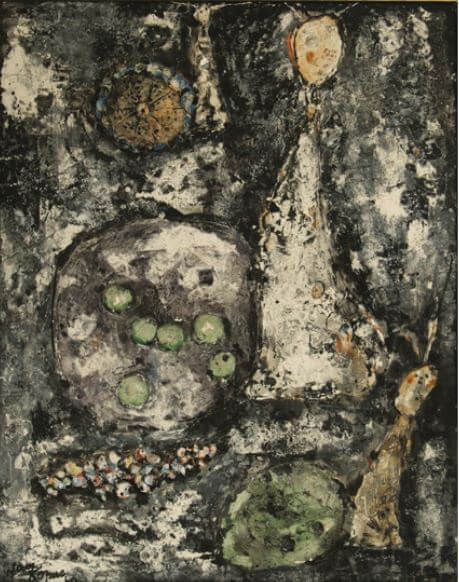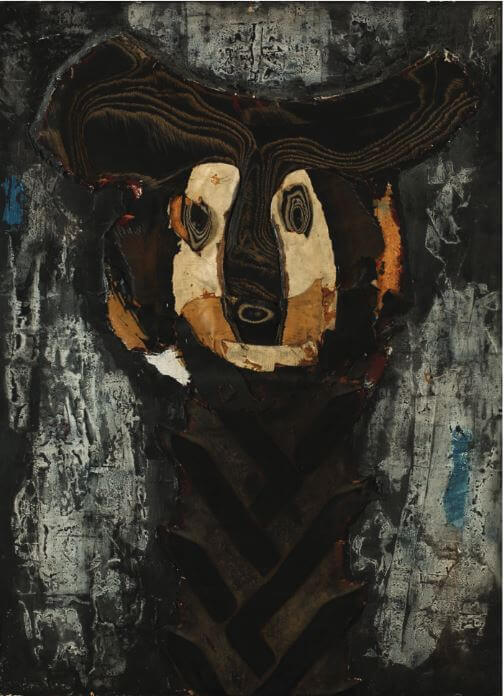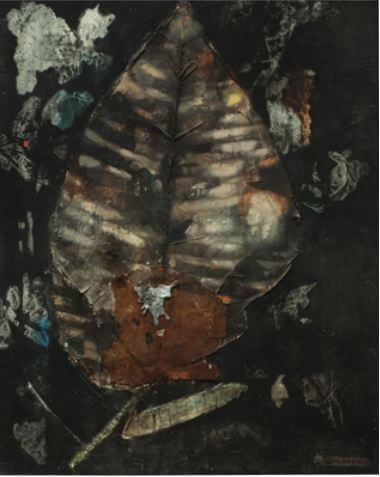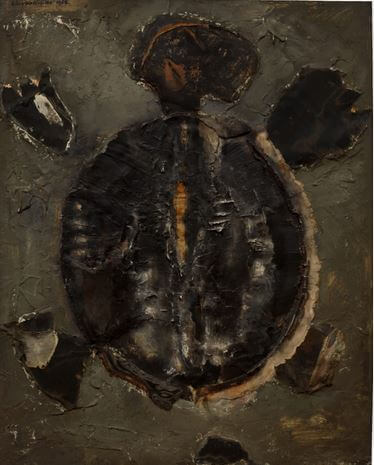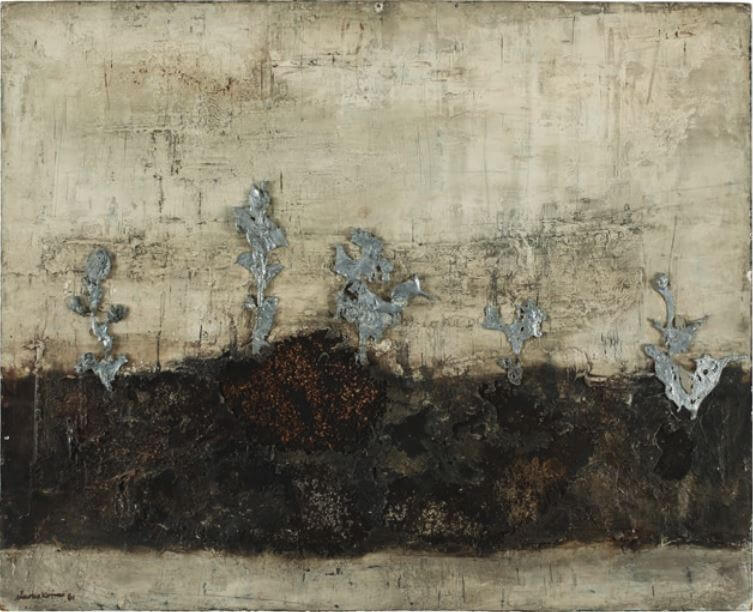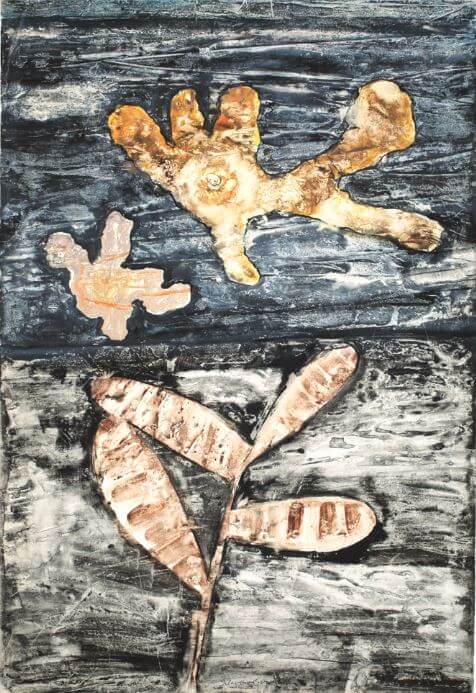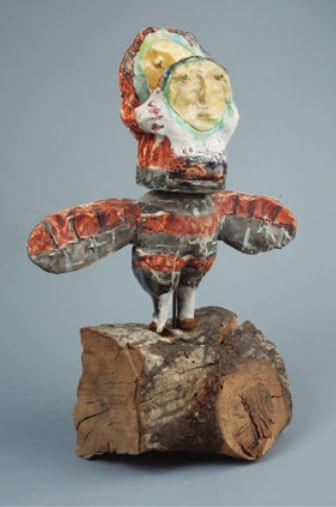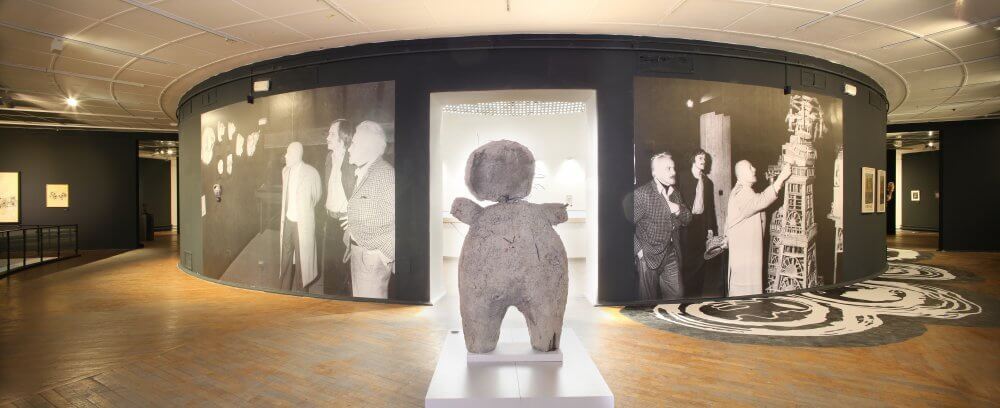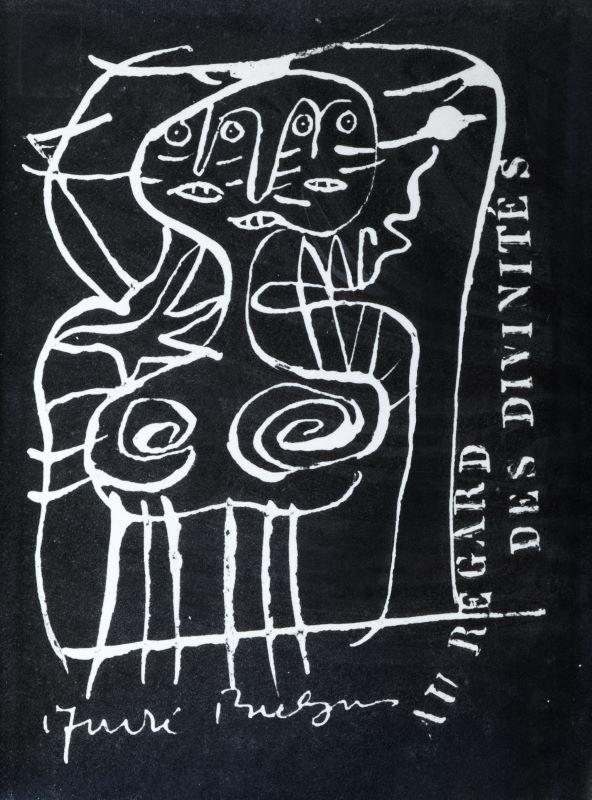Meštrović Pavilion
The Kopač exhibition is held in the House of Croatian Artists, so-called Meštrović Pavilion, located in central Zagreb, Croatia. It was one of the first round exhibition halls in the region designed by Ivan Meštrović and built in 1938. Today, it is one of the iconic architectural landmarks in Zagreb. The visitors can hence study and enjoy both the beautiful building and the exciting exhibition.
After entering the building through the main entrance, the visitor can proceed to the central exhibition hall, the Barrel Gallery. It is a cylindrical space where an oversized floating image, which is also the most exclusive part of the exhibition, introduces the visitor to the magical world of Slavko Kopač. It is the ceremonial curtain from the Croatian National Theater in Osijek, which Kopač completed in 1989 with the assistance of painter Rudolf Labaš. So far the image could only be seen on rare occasions at this theatre. The canvas measuring 63 square meters was based on one of his paintings from 1947 called Old Slavonia. In the center of the composition is the bright red horse, accompanied by two more horses in the pastoral landscape of a forest with yellow-red and green treetops and shrubs. Flora and fauna in this image symbolize a primordial, innocent world.
In the same room, the nudes from Four Seasons, the intimate, lyrical collages of larger formats from the late 1970s, are exhibited. After having admired the idyllic scenes, a visitor can take the stairs located to the left and the right from the main entrance.
Both stairs lead to a circular exhibition hall on the upper floor, the so-called Ring Gallery. If you proceed from there to the smaller exhibition hall which opens into the cylindrical space and offers views of the Barrel Gallery below, you can once again admire the artworks exhibited in the Barrel Gallery but from a different perspective.
In the Ring Gallery, you can continue to study what seem to be familiar motifs. Recognizable, easy to understand, often completely ordinary objects: glades, boars, horses, birds, cats, cows, butterflies, turtles, magical metamorphoses of flora and fauna, colorful bestiary. However, the coloring he used often differs from reality, which gives those motifs their otherworldly appearance.
Paris, the City of Dreams
Slavko Kopač (1913, Vinkovci–1995, Paris) studied in Zagreb and Paris. In 1948, Paris became his permanent residence and artists such as Jean Dubuffet, André Breton, and Michel Tapié were his colleagues and close friends.
Kopač’s artistic activity is related to l’art brut (French for “raw art”) and l’art informel (French for “formless art”). The term Art Brut was introduced by Jean Dubuffet in the 1940s. It determined a trend in Contemporary Art in Europe, which brought together artists who embrace seemingly primitive and childlike artistic expression. Their works were characterized by originality, imagination, spontaneity, and archaic expression and had nothing to do with the known art that could have been seen in contemporary museums and galleries.
The collaboration and friendship with Dubuffet were of great significance for Kopač. Dubuffet soon appointed Kopač as chief curator and archivist of Art Brut Collection. Kopač lived modestly and devoted almost his entire working life to running this collection (till 1975 when it was relocated to Lausanne in Switzerland). He lived outside the circles of art dealers and did not get realistic acknowledgment in the art world.
Kopač and Dubuffet had similar education and created similar art but came from completely different backgrounds. Kopač was aware of the difference between his own origin and the origin of Dubuffet, who was on his own in Paris, while Kopač could be happy if he got a meter of sun, as he once said. Working in parallel, the two of them respected and certainly loved each other. In an interview, Kopač admitted that he had to take French citizenship if he wanted to be the head of the Art Brut Collection, and Dubuffet demanded it.
Kopač lived in Paris for decades but did not set foot in the famous Louvre Museum, believing that this would adversely affect his creations. Yet, he didn’t consider himself an art brut artist because he had burdened his subconscious with knowledge, and therefore was no longer a pure or free man. The art brut artist, in his opinion, was not interested in what was happening around him. He was completely free. Kopač’s only wish was to see the world in a different way than people in Paris saw it.
Animal Motifs
The exhibition in Ring Gallery of Meštrović Pavilion is organized both chronologically and thematically because, in Kopač’s case, the chronology imposes typology. When he would exhaust one material or one topic, he would not return to them. He was constantly striving for something new and different. He even worked for a while with his left hand, because his right hand was no longer imaginative enough, as he explained. So, as you go through the exhibition, you constantly encounter new motifs, new materials, and new techniques.
Kopač’s works from the 1940s characterize raw and immediate expression. He made numerous paintings with animal motifs. The large Cow from 1948 occupies the entire surface, painted in profile, with a large udder and horns, as if it was drawn by a child.
The cows in the Cows on a Stroll, another oil on canvas, are quite confident, set up frontally, seem to be making small talk. The figures are flat, clad in yellow, grey, and reddish.
In the painting On the Galapagos Islands, a tortoise occupies the entire surface, but here Kopač used a mixed technique on panel.
In the early 1950s, Kopač began experimenting with techniques. He showed particular interest in the materials with which he built the image. In addition to paint, he used sand, rubber, and metal. In the sculpture, he used stone, wood, paper, glass, cement, wire, lava, bricks, plaster, and many more. He worked on paper, canvas, panel, linoleum, plywood, cardboard, silk paper, plank… He used these materials most unexpectedly and was an expert in all the techniques. There was no hierarchy in art materials for him. His paintings became more intimate and poetic. His Bride has pearl eyes and, in this painting, he used pebbles painted green and blue.
The beginning of the 1960s is recognizable by a series of works made of rubber and lead. When he used rubber, he tore it, ground it, and adapted it to the composition. When you look at those pictures, you would never think they were made of rubber.
Kopač first cut the tires and then finely sanded and machined them, and then made very subtle embossed shapes out of them so that the tire is not recognizable at all. In this way, he elevates a simple form like the Rusted leaf to the level of symbol. Dark tones are enriched with unusual use of lead which enlivens the image.
His Turtle from 1962, made from a tire, is flat like a pressed leaf.
From Black ground, plants grow, and these are also shaped from lead. Kopač was among the pioneers of the decorative use of lead. He began to use it in the early 1960s. He dripped it on canvas creating various forms. Famous German artist Anselm Kiefer was, 20 years later, famous for using lead as an artistic medium.
Kopač created and documented the world he felt in himself. He was never interested in the tree he saw. The tree he made was his tree. It had only a distant connection with the one he saw. His simple, everyday forms spread out on a surface and took on new forms, e.g. a form of an ancient amoeba-like organism in Tree + birds.
Throughout the exhibition, you can see Kopač’s sculptures, sometimes strangely funny, but never grim. His miniature ceramics, fragile little sculptures, are cheerful, lively works. The monumental sculptures like Woman, made of cement, river pearls, and colored stone with the roughly treated surface, remind us of so-called primitive art. This sculpture was last exhibited 25 years ago.
In several places of the exhibition, his poetry is highlighted and thus compared with his artwork. Despite Kopač’s connection with Breton, we know that he never signed surrealist declarations or participated in surrealist meetings. He enjoyed illustrating, binding, and making fragile art books. He illustrated André Breton’s poem Au regard des divinités (In the Eyes of the Gods) and Breton organized an exhibition for Kopač in his gallery, A l’etoile scellée, in 1953.
Kopač worked very hard and did not want to sell his works during his life. He was an authentic artist who did not strive for fame or recognition. If the reproduction of some of his works here leaves an impression of dark color, you certainly have to see these works in person, as Kopač created from earth and coal a unique light. This hidden light is thus illuminating his pictures from the inside.
The exhibition Kopač at the Meštorivić Pavillion in Zagreb, Croatia runs until March 27, 2022.
